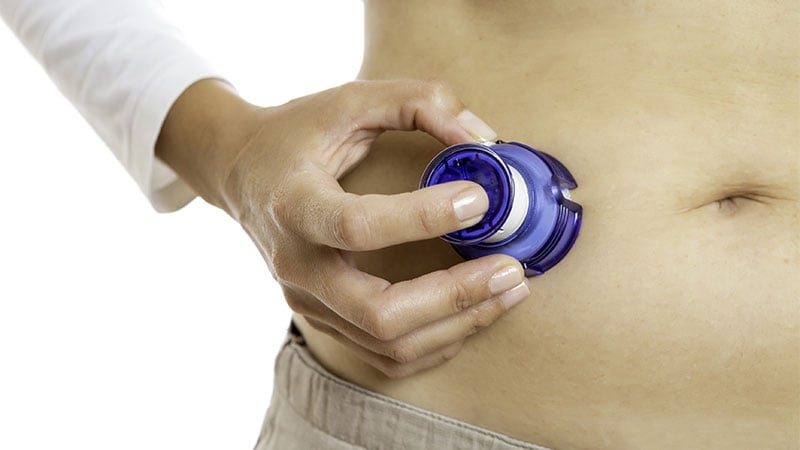Skin Reactions at Insulin Pump Infusion Sites: Research Findings
Core Concepts
Skin reactions at insulin pump infusion sites can lead to delivery failure due to allergic sensitization, inflammation, and other factors.
Abstract
The research conducted at the University of Washington focused on skin reactions at insulin pump infusion sites in 30 patients with type 1 diabetes. Key findings include differences in fibrosis, inflammation, eosinophils, and vessel density at pump sites compared to control sites. Eosinophils were a surprising histologic finding, indicating a delayed-type hypersensitivity response. Skin reactions represent a significant challenge in the use of insulin pumps, impacting patient experience and device effectiveness.
Skin Problems Common at Insulin Pump Infusion Sites
Stats
"The mean age of the patients was 48.3 years, the mean diabetes duration was 30.4 years, and the mean duration of pump use was 15.8 years."
"Nearly all patients (93.3%) reported itchiness at the site, and 76.7% reported skin redness."
"Eosinophils were found in 73% of skin biopsy specimens from current sites and in 75% of specimens from recovery sites, compared to none from the control sites."
"Inflammation scores were positively correlated with insulin dose (P = .009) and were negatively correlated with time in range (P = .01)."
Quotes
"The inflammatory response may result in tissue changes responsible for the infusion site failures seen frequently in clinical practice." - Andrea Kalus
"It doesn't really matter how good the technology is. We still don't understand what is happening with the infusion sites, much less to [be able to] fix it." - Irl Hirsch
Key Insights Distilled From
by Miriam E. Tu... at www.medscape.com 08-02-2023
https://www.medscape.com/viewarticle/995068
Deeper Inquiries
What are the potential long-term effects of skin reactions at insulin pump infusion sites?
Skin reactions at insulin pump infusion sites can have several potential long-term effects on individuals with type 1 diabetes. These effects may include chronic inflammation, fibrosis, and tissue damage at the infusion sites. Chronic inflammation can lead to skin changes that may affect the effectiveness of insulin delivery, potentially resulting in inconsistent blood glucose control. Fibrosis, which is the formation of excess fibrous connective tissue, can lead to scarring and reduced tissue flexibility over time. Additionally, repeated skin reactions may cause discomfort, itching, and redness, impacting the quality of life for individuals using insulin pumps.
How can manufacturers address the challenges posed by allergic sensitization and inflammation in insulin pump users?
Manufacturers can address the challenges posed by allergic sensitization and inflammation in insulin pump users by focusing on the materials and components used in pump manufacturing. To mitigate allergic reactions, manufacturers can explore alternative materials for pump casings, adhesive components, and insulin preservatives. Conducting thorough biocompatibility testing and allergen screenings during the development phase can help identify potential triggers for skin reactions. Additionally, incorporating hypoallergenic materials and preservatives in pump design can reduce the risk of sensitization and inflammation in users. Regular monitoring of user feedback and adverse events can also help manufacturers identify and address issues related to skin reactions promptly.
How might the presence of eosinophils impact the development of future insulin pump technologies?
The presence of eosinophils in skin biopsy specimens from insulin pump infusion sites can have implications for the development of future insulin pump technologies. Eosinophils are not typically found in healthy skin but are associated with allergic reactions and delayed hypersensitivity responses. The high prevalence of eosinophils in infusion sites suggests a potential immune response to components of the pump system. Understanding the role of eosinophils in skin reactions can guide manufacturers in designing pump technologies that minimize immune responses and allergic sensitization. Future insulin pump technologies may need to prioritize biocompatibility, hypoallergenic materials, and reduced inflammatory potential to prevent eosinophil-mediated skin reactions and improve user comfort and safety.
0
More on Healthcare
